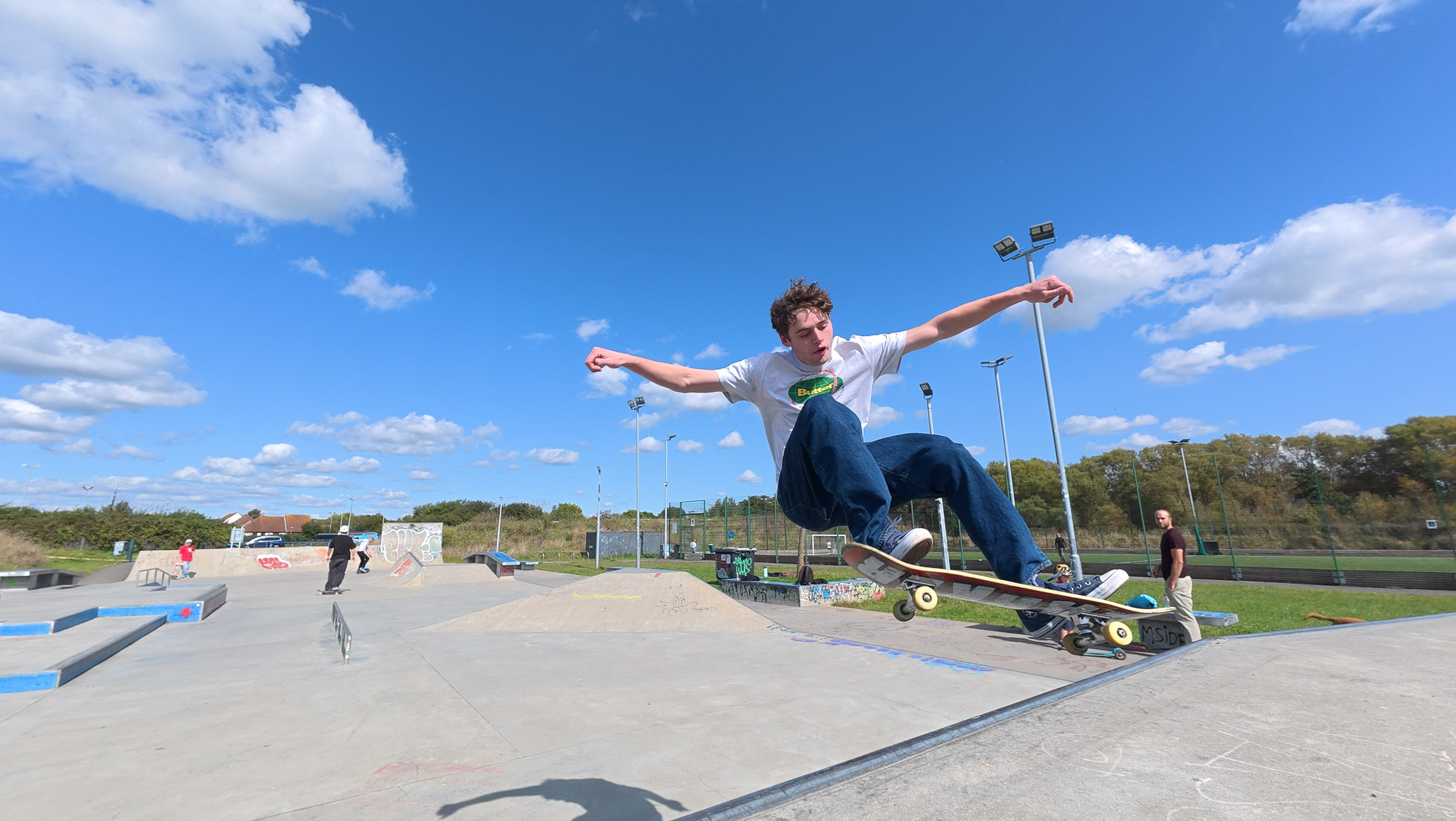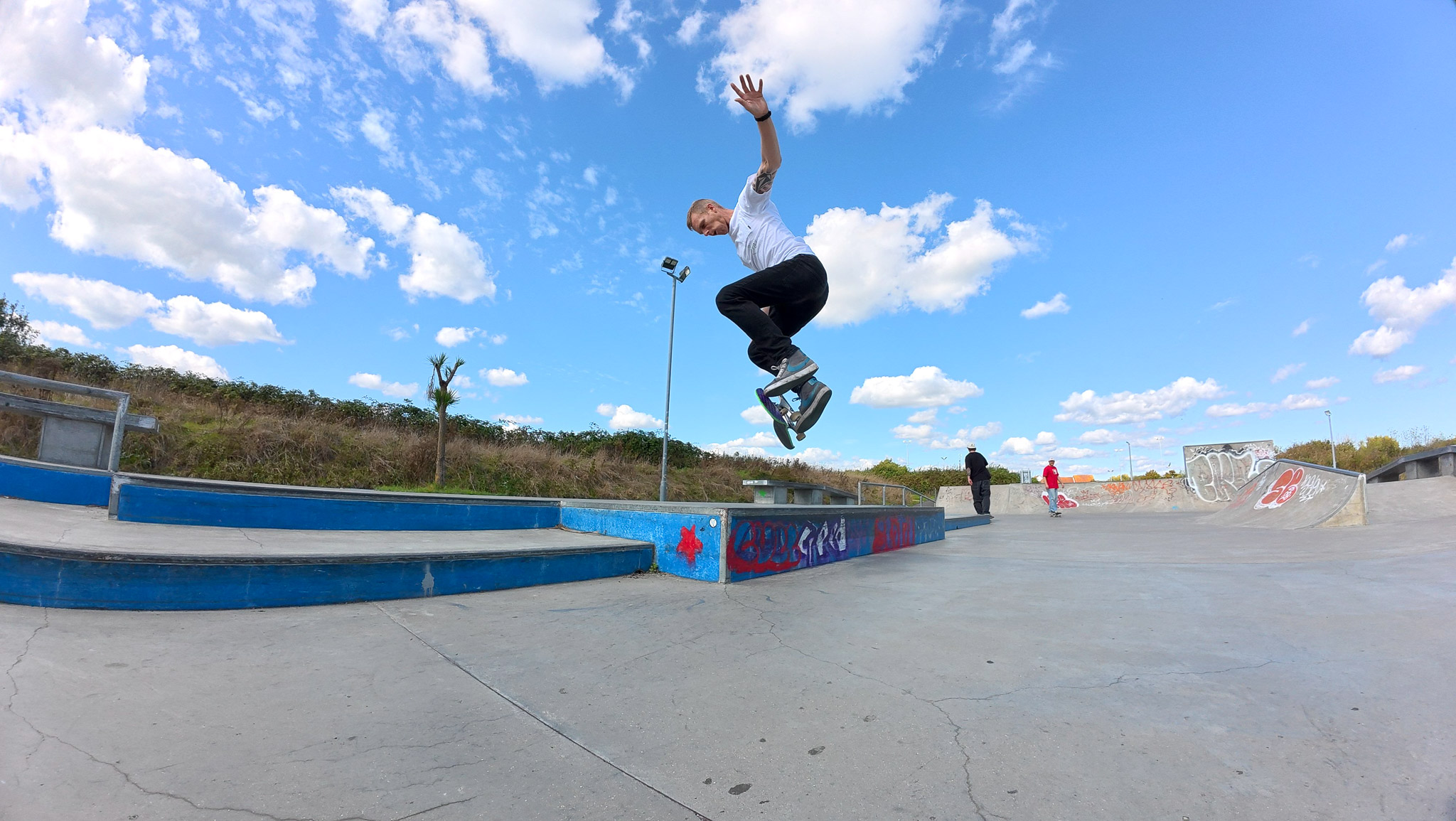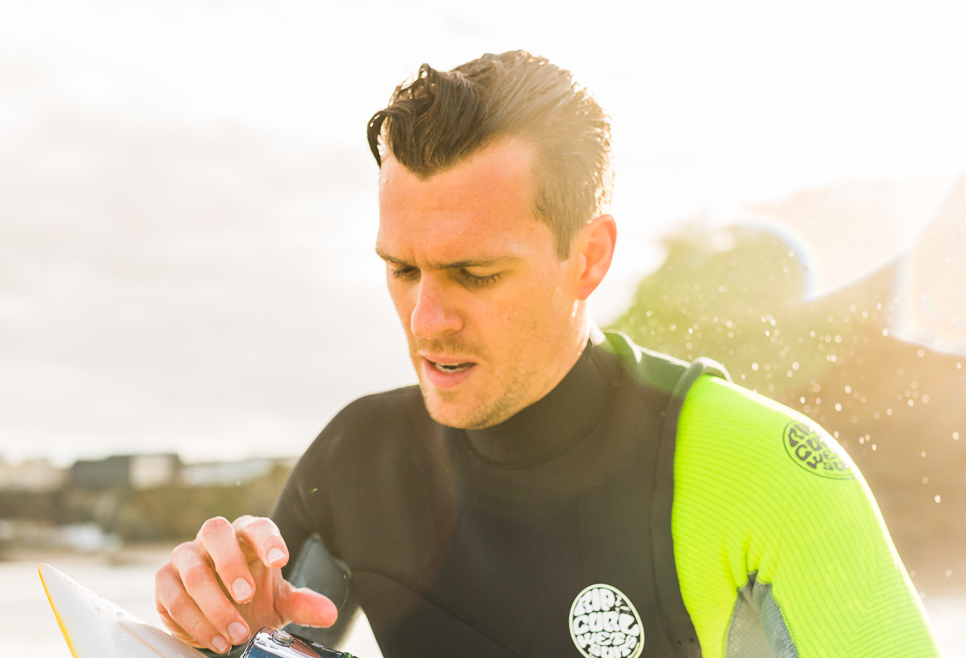DJI Osmo Action 5 Pro review: Low-light legend with top-tier image quality
Updated action cam ushers in better low-light performance, improved battery life and dual OLED touchscreens


DJI has made some massive improvements to its already excellent Action Pro series of cameras, including boosting the maximum photo resolution, increasing battery life, offering massive internal storage, and upgrading the brightness and colour quality of the dual OLED touchscreens. Overall, it’s a much better camera than its predecessors, but it also comes with a higher price tag.
-
+
Excellent low-light performance
-
+
Dual OLED touchscreens
-
+
Impressive stabilisation via RockSteady+
-
+
Large 47GB internal storage
-
+
Waterproof up to 20m without housing
-
+
User-friendly interface and app
-
-
No built-in GPS (requires external accessory)
-
-
Limited pro-level video tuning options
-
-
Higher price point compared to predecessors
-
-
Slight struggles with high-contrast lighting conditions
Why you can trust T3

The action cameras are like buses: you wait an age for the latest updates and then two of the biggest players in the game arrive with fresh product at the same time.
World-renowned drone, gimbal and now portable power bank aficionado DJI has released its hotly anticipated Osmo Action 5 Pro model just after GoPro dropped the silk sheet on its Hero and GoPro Hero Black 13 line of powerful action cameras.
Both models appear to be very similar from the outside, but there’s a lot going on underneath the skin, ushering in a series of choice upgrades that make both cameras worthy of a place on the best action camera shortlist.
Here, we’ve been getting to know the DJI Osmo Action 5 Pro ahead of its official launch, testing the latest pro-level chip, evaluating its new centring and tracking capabilities, and making the most of the generous internal storage while testing the massive 13.5-stop dynamic range late into the night.
DJI Osmo Action 5 Pro review
Price and availability

The DJI Osmo Action 5 Pro launched worldwide on 19 September 2024 and is now available at DJI, priced at £329/ $349/ AU$599 for the Standard Combo and £409/ $449/ AU$769 for the Adventure Combo, which we tested here.
The latter comes with a 1.5m Extension Rod, two additional batteries and a neat Multifunctional Battery Case that is able to charge three batteries at once via the included USB-C cable and store additional battery packs when not in use.
This kit also included the standard plastic protective frame, a magnetic adaptor mount, a mini magnetic adaptor mount, a curved adhesive base and two locking screws.
Get all the latest news, reviews, deals and buying guides on gorgeous tech, home and active products from the T3 experts
Being DJI, there are all sorts of bundles you can choose from, including Fishing Combos with a hanging neck mount and those geared towards cyclists, skiers, divers and more, with an array of accessories bundled into the cost.
Seeing as the new model has just been launched, DJI has naturally reduced the price of its predecessor, with the DJI Osmo Action 4 (still a very good camera) available to buy for just £259 (down from £289) for the Standard Combo and £349 (down from £379) for the Adventure Combo.
Specifications

- Weight: 146g/5.15oz
- Dimensions: 70.5x44.2x32.8mm
- Max video resolution: 4K at 120fps (4:3), 4K at 120fps (16:9), 1080p at 240fps (16:9) (10-bit 10-bit & D-Log M & HLG)
- Max photo resolution: 40MP
- ISO range: 100-25,600
- Image Sensor: 1/1.3-inch CMOS
- FOV: 155º
- Aperture: f/2.8
- Connectivity: Wi-Fi 6.0, Bluetooth, USB-C
- App: DJI Mimo
- Battery: 1950 mAh/210 minutes
- Timelapse: 4K, 2.7K and 1080p/30fps
- Slow motion: Up to 8x 240fps
- Waterproofing: 20m/66ft natively
- Built-in GPS: No (via DJI Osmo Action GPS Bluetooth Remote)
- Stabilisation: RockSteady, RockSteady+ and Horizon Lock
- Built-in storage: 47GB
- Live streaming: Yes (via app and hotspot)
Design and build quality

Very little has changed on the outside when you hold the DJI Osmo Action 5 up against its predecessor - it is essentially the same size and weight, with only a few minor tweaks to overall design.
Keen eyes will notice that the microphone slots have been moved, so now appear as two neat bars above and below the Action 5 Pro logo. The DJI logo has also been removed from below the front display, as this is now a new touchscreen OLED, which plays nicely with the main touchscreen OLED at the rear.
Flip it over, and there’s the same magnetic mounting for the accessories clip, which GoPro has since adopted in the Hero 13 Black. It allows for rapid swapping of various accessories, leaving the main mount attached to your favourite selfie stick or body mount and removing the need to unscrew anything. It saves bags of time and faff.
The casing is fashioned from a toughened textured plastic, which can now withstand depths of up to 20m/65 feet without the need for additional waterproof housing. It can also handle more extreme temperature variations than the model it usurps, with DJI claiming it is good for -20°C to 45°C.
Out of its snap-on cage, it is marginally smaller than the GoPro Hero 13 Black, arguably its closest rival. It is also almost identical in weight, but DJI makes excellent use of the real estate, maxing out both the front and rear screens.

The move to OLED means they are also generally much brighter and easier to see in harsh daylight (thanks to the additional 14 pixels per inch), while the touch sensitivity feels much better, reacting well even when covered in mud, dust, or water.
There is also a new built-in pressure gauge, which won’t mean much unless you are climbing mountains or plunging into the depths of the ocean regularly. But if you are, the camera can now automatically give altitude read-outs alongside water depth measurements.
This can all be overlayed on resulting footage via the DJI Mimo smartphone app, which offers a bunch of preset ‘dashboards’ that sit on the clips so everyone can see how gnarly you are.
Unfortunately, there’s still no option for built-in GPS data, meaning things like speed read-outs and location overlays on the dashboard can only be accessed if you pair one of DJI’s Osmo Action GPS Bluetooth Remotes.
Other notable improvements over its predecessor include dual microphones, cleverly relocated to cut out unwanted wind and background noise, as well as improved running time of the more energy dense batteries. DJI claims a runtime in excess of 210 mins, as opposed to the 102 minutes managed by the Osmo Action Pro 4.
Finally, and we’ve probably saved the biggest boon until last, there’s now a mammoth 47 GB of internal memory, which should be enough for most casual fillers and photographers without the need to scrabble around for a microSD card - although these are still supported for extended storage.
Set-up and use

Getting acquainted with the DJI Osmo couldn’t be simpler, as the menu screens on the back of the camera prove really easy to navigate. The main shooting modes are accessed via a small logo located in the very bottom left corner of the screen.
This is replicated on the smaller front screen, although its diminutive dimensions generally makes it slightly fiddlier to press the right button. It is possible to customise the modes that appear in this ‘Quick Switch’ menu, but I found it’s easier if you activate all of them.
As with many rivals, it’s a case of swiping up to change resolutions, aspect ratios and whatnot, swiping down to access main camera settings, or clicking on the small play button to access saved files.
There aren't as many options to really tune video and photographic settings like there are in the latest GoPro products, but I feel the DJI Osmo Action 5 Pro has things pretty well dialled off the bat, so there’s not as much need to tweak exposure, sharpness and more.
That said, the camera does support D-Log M flat colour profiles, so you can create detailed files that can be graded using your favoured software. If that’s not your bag, DJI offers a good selection of filters and editing tools within the Mimo smartphone app, anyway.
On that subject, I found the accompanying app to also be excellent, very easy to use and stable - unlike previous experiences I’ve had with GoPro software.
It’s all really easy and intuitive to use, with powerful built-in editing tools, the ability to livestream through Facebook, YouTube and other networks, as well as templated tutorials for how to make a bunch of typical social-media friendly cuts, without the need for expensive computer equipment and additional software.
Features

Although it’s lovely to be able to take top quality pictures and drop in a couple of beautiful timelapse videos into an edit, the main reason you purchase an action cam is to, well, capture the action.
DJI has either introduced or beefed up a number of features that make high octane footage easier to capture and it looks better for it as a result. Stabilisation has been tuned to RockSteady+ now offers almost unshakeable levels of smoothness.
For this test footage, I ran around like a lunatic at the local skatepark, attempting to capture my youngest cruising
around on his bike. Even with super slow-mo activated, the resulting footage looks as if it was captured with a gimbal. It wasn’t. It was just me and a selfie stick.
Continuing the gimbal theme, DJI has also introduced subject tracking, which automatically detects the main person in the frame and, with the help of clever software, keeps them in the centre despite what the camera is doing. Currently, the max resolution is 2.7K at 16:9 or 9:16 when in this mode.
It works really well and you can see in the test footage of me running my local trail route looking like a wally from the 1980s (Oakley shades for the win) that the resulting footage is smooth. DJI’s s ‘InvisiStick’ AI smartphone software makes it simple to edit out the selfie stick, too. Although it just looks like I’m running weirdly.
During that test, I found the Osmo Action 5 struggled a bit with high contrast lighting situations, sometimes leaving the subject in the dark, but exposing for these sorts of lighting conditions is a nightmare whatever camera you use.
I also really liked the Quick Shot function that either takes a still image or kick-starts your most recent video recording profile when the shutter button is pressed. If the camera has been powered on recently, it springs to life almost immediately.
This is great if you need to capture some impromptu action and you don’t want to have to wait for the camera to go through its start-up process. What’s more, 30 imagers per three-second burst mode proved enough to capture some skating action at my local park.
A recent update to the operating system has also seen a number of stabilisation scenarios added, making it much easier to get the perfect balance of natural-looking footage, without the jitters and shakes.
A Sport Mode prioritises stabilisation, as it assumes you are going to be running, cycling or participating in other extreme activities. A more sedate ‘Daily’ mode is suggested for walking, as it offers enough stabilisation while prioritising brighter images in low lighting.
Performance
It is fair to argue that overall performance has improved across the board for the DJI Osmo Action 5 Pro, be it in capturing much more detailed and malleable stills, snaring awesome timelapse or hyper-lapse footage, or bagging ultra-crisp, super slow-mo video.
Starting with the stills, as there has been a massive jump in megapixels here. These 40MP files now contain far more detail, and zooming in to a couple of well-lit snaps I took when out and about, I was impressed with the sharpness and the ability to recover shadows, even when using basic iPhone editing software.
The 155-degree field of view is massive, making it adept at capturing busy cityscapes in a lovely, wide angle. But it also attempts to remedy some of this with a Standard (Dewarp) mode that removes most of the fisheye look.
It is possible to shoot in JPEG or JPEG+RAW format, which is fantastic for those who like to import to Lightroom and other image processing software to stamp a grade or make more detailed tweaks.
There is also a burst mode of sorts, which can shoot 30 images in three seconds, but this number drops to nine when shooting at the max 40MP 4:3 files.











Arguably DJI’s biggest party trick with the latest camera is its new SuperNight mode, which allows for fantastically detailed video in low light situations. With a frankly ridiculous 100-25,600 ISO range, it’s also possible to capture pretty decent imagery in the dark, although expect noise at the very top end of that spectrum.
Resolution is also king in the action camera world and although the DJI can’t compete with the 5.3K at 30fps offered by GoPro, it can handle 4K at up to 120fps, which feels like more than enough for most casual filmmakers, vloggers and content producers.
Hyperlapse allows users to speed up real-time footage, ranging from x 2 to x 30 times, while a more traditional Timelapse can be set-up in camera with a bunch of presets making the whole business of getting it right a bit easier.
Crowds, clouds and sunsets are all covered, while a custom menu allows shot interval and video duration to be selected, with the usual video settings (exposure, white balance and video format) all easily accessible.
Verdict

The DJI Osmo Action 5 Pro is a great update on an already excellent camera. Those already deeply embedded in the DJI ecosystem will find it a great addition to their filming arsenal, as it can capture seriously smooth and perfectly sharp images without too much fine-tuning.
Arguably, the GoPro still remains the more Prosumer-orientated choice, as it offers more in the way of Pro tuning and the draw of 5.7K resolution, which allows for a much greater scope when cropping imagery in post-production without a loss of image quality.
But I found the Action 5 Pro an easier camera to live with than the previous generation GoPro cameras that I have worked with: the app is generally more reliable and much easier to edit and tweak video footage in, while the ability to switch settings and interact both on the camera’s dual OLED screens and within the smartphone app is just simpler.
This is a solid update and a genuine option as one of the best action cameras. However, given that its price is similar to that of its key rival, GoPro, the buying decision will be difficult.
Also consider
The most direct competitor, the GoPro Hero 13 Black offers 5.7K video resolution, better pro-level video settings, and fine-tuning options. It's ideal for those who want high-end features like Hypersmooth 6.0 stabilisation, superior waterproofing without a case, and improved low-light performance. It is highly favored by prosumers.
Known for its 360-degree video capability, the Insta360 X3 is a versatile option for content creators who want more immersive footage. It offers 5.7K 360 video, great stabilisation, and features like FlowState Stabilization and Horizon Lock, making it an interesting choice for more creative shots.
A budget-friendly alternative, the Akaso Brave 8 delivers 4K/60fps video and 48MP still images. Though it lacks the refined stabilisation or OLED screens of its more expensive counterparts, it's a solid choice for those seeking an affordable action camera with decent performance.
With its 1-inch sensor, the Sony RX0 II offers excellent image quality, even in low-light situations. It’s designed for content creators who value superior image quality over extreme versatility. The camera is compact, rugged, and waterproof, though it lacks some of the intuitive usability features of the DJI and GoPro models.
If you’re looking for smooth, stabilized video without carrying bulky gear, the DJI Pocket 2 could be a great option. It features a built-in gimbal for buttery-smooth footage and is excellent for vloggers who prioritize portability. While not as rugged or waterproof as other action cameras, it offers great video quality with a 64MP sensor and 4K/60fps video.
Leon has been writing about automotive and consumer tech for longer than he cares to divulge. When he’s not testing the latest fitness wearable and action camera, he’s out in a shed fawning over his motorcycles or trying not to kill himself on a mountain bike/surfboard/other extreme thing. He's also a man who knows his tools, and he's provided much of T3's drills coverage over the years, all without injuring himself.
You must confirm your public display name before commenting
Please logout and then login again, you will then be prompted to enter your display name.


